Did you see our reel posted in collaboration with Jezarely Miguel, Founder and Designer of sustainable home décor brand Matiz? If you missed it, no worries! Jezarely was kind enough to share the deets in a detailed Oaxaca travel guide for all of you interested. We’ll also learn more about Matiz, the rug making process, and the team behind the brand. And, don’t forget to watch the videos at the end of this post for a closer look! Thanks to Jezarely for sharing the info below…
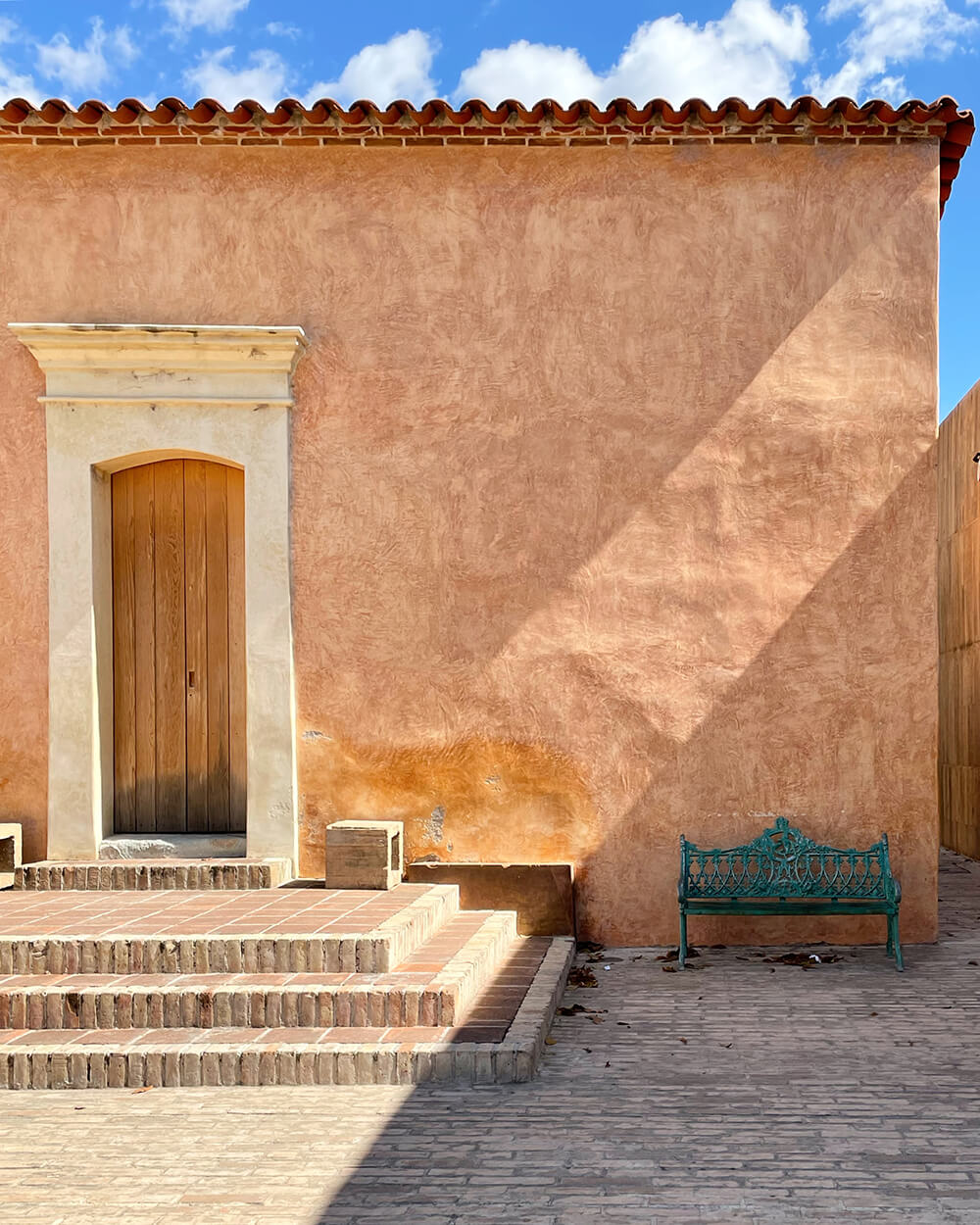
Matiz (mah.teez), meaning hue in the Spanish language, designs artisanal work that respects and preserves the indigenous traditions of handmade textiles. I began Matiz in the midst of the global pandemic in 2021, but most importantly in the spirit of my love and admiration for my roots. My designs are a reflection of the beautiful southern state of Oaxaca, Mexico, where my family’s story was founded. In an effort to support artisan makers, I have blended my past expertise in the commercial interior design industry and appreciation for sustainability, by developing artisanal rugs to bring more awareness to cultural heritage craft processes and sustainable practices.
Working directly with our artisans, we bring high-quality, small-batch rugs, committed to using locally sourced materials from Teotitlan del Valle, Oaxaca. We encourage our team to set their own wages and support them by allowing them to create and continue their craft for generations.
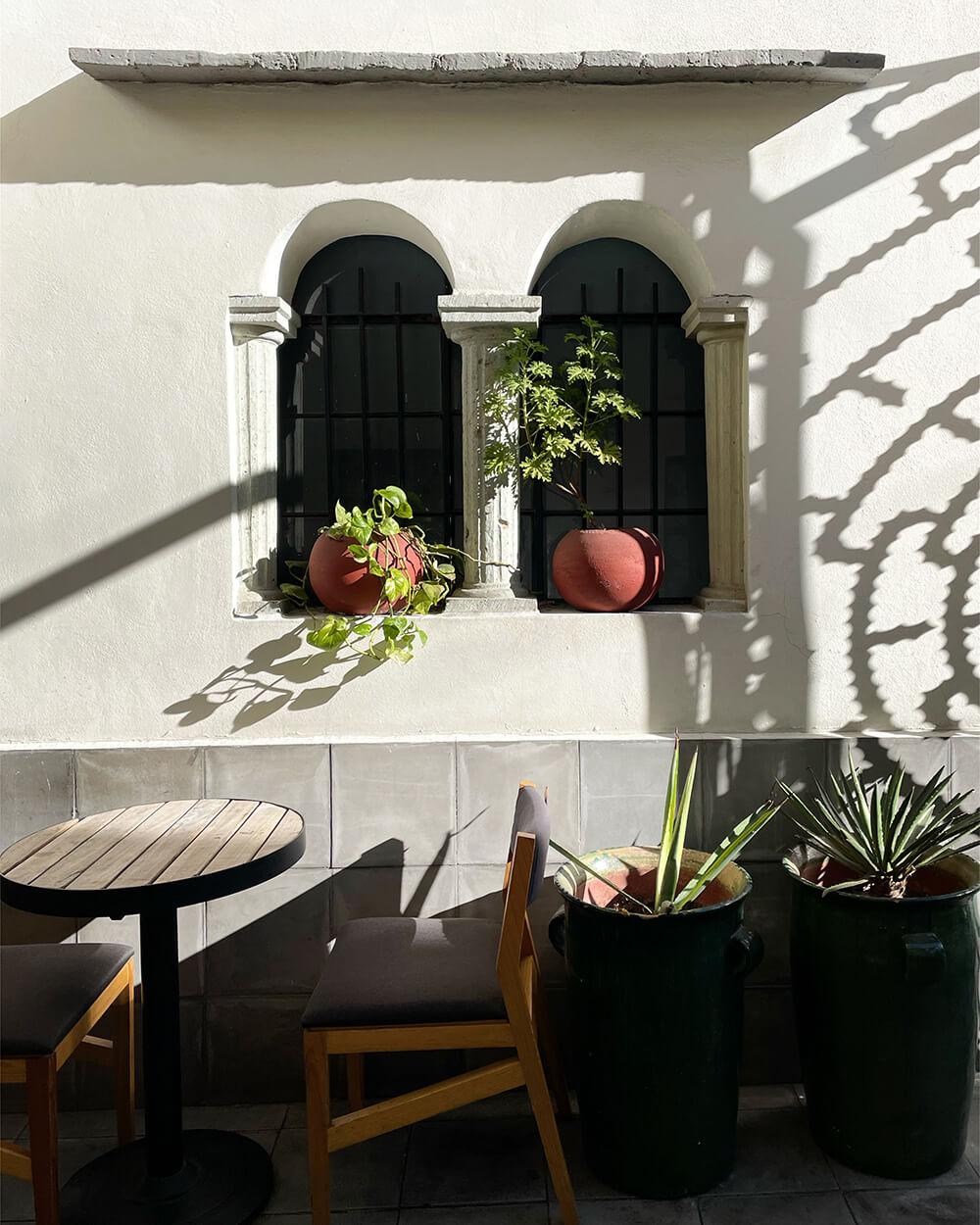
oaxaca travel guide
Located in southern Mexico, the state of Oaxaca is known for its rich culture, diverse landscape, colorful architecture, and delicious food. If you’re looking for an all-in-one experience, begin your adventure in Oaxaca City, Oaxaca’s capital and largest city in the state. Its central location allows this city to be full of diverse experiences and learning opportunities from dialects, food, and artisanal goods.
Here are some prime locations to visit during your stay in Oaxaca City.
Templo de Santo Domingo: One of the largest cathedrals in the city that continues to hold history, exemplify baroque style architecture, and a strong religious significance. This is the perfect spot in the city to grab lunch or dinner at a nearby rooftop restaurant for extraordinary views of the church and the surrounding landscape. A few of our favorite spots are Gozobi, Tierra del Sol, and Casa Oaxaca.
- Jardin Etnobotanico: Located on the same block as Templo de Santo Domingo, Jardin Etnobotanico is a botanical garden that showcases a wide range of Oaxaca’s native plant species. One-hour guided tours are available in spanish, english, and french, however due to its popularity and limited capacity, it’s recommended you arrive 30 minutes prior on weekdays and an hour before on weekends.
- El Zocalo: El Zocalo is Oaxaca’s busiest public square with a kiosk right in the center. During the day, you can find vendors on the sidelines selling anything from painted alebrijes, embroidered clothing, elaborate beaded jewelry, to many other crafts.
- Mercado Benito Juárez: Walk a block south from El Zocalo to Mercado Benito Juárez, a covered market that showcases everything from artisanal goods to fresh produce. If you are on the hunt for more handmade goods, walk down two more blocks to El Mercado de Artesanias.
- Mercado 20 de Noviembre: The best time to hit Mercado 20 de Noviembre is either in the morning for breakfast or throughout the afternoon for lunch. There is an abundant amount of food stalls, all offering similar menus, so don’t be afraid to sit at any of them, you won’t be disappointed. We recommend you order a tlayuda, which is a large tortilla that is typically topped with, lard, beans, veggies, oaxacan cheese, salsa, and your choice of meat. To top it off, order an agua fresca (fresh juice), to complete your oaxacan meal.
- Hierve el Agua: If your time in Oaxaca allows for day trips to neighboring towns, we highly recommend you visit Hierve el Agua in the town of Roaguía. Due to its location and road conditions, it is best to travel with a local or an agency. Our time with Coyote Aventuras via Airbnb allowed us to visit multiple locations – Roaguía, Tlacolula, and a mezcaleria near Teotitlan del Valle.
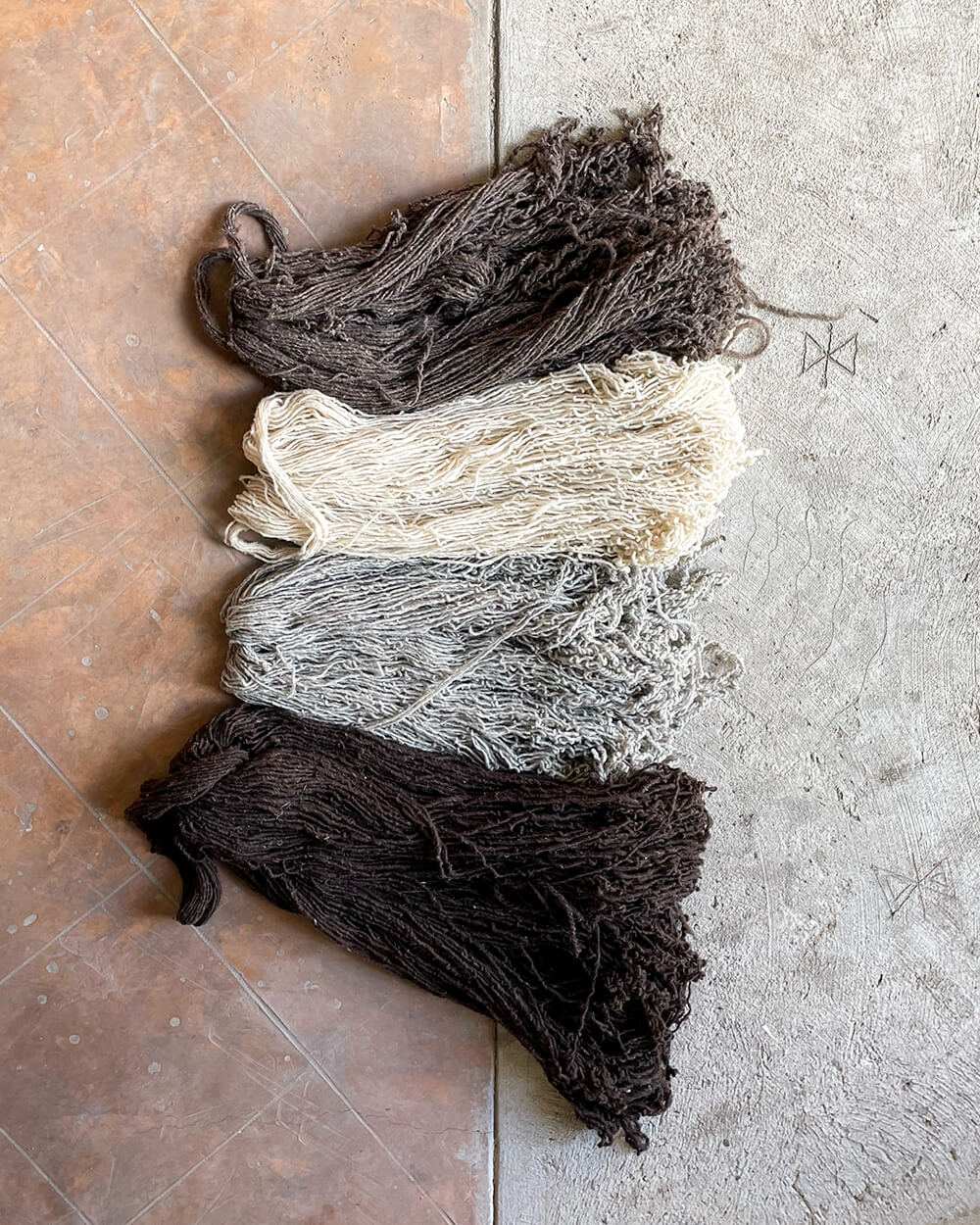
wool rug making process
Matiz is a strong believer of sustainability and all it entails. Therefore, we believe in preserving our artisans craftsmanship which includes the practice of gathering local wool and producing natural dyes with ingredients from Teotitlan del Valle. Below is a brief summary of the wool rug making process our artisans have implemented for the past four generations.
- Washing: After gathering the necessary quantity of wool for a rug, our artisans harvest a local ingredient called raiz de amole, found in Oaxaca’s luscious forests. Due to its cleaning properties, raiz de amole is used to wash the wool because it naturally produces foam.
- Brushing: Once the wool has been washed and laid out to dry, the wool is continuously brushed until the brushing strokes are smooth and all the knots have been removed. The brushed wool is then spun on a spinning wheel to prepare a full skein.
- Ingredients Selections and Dyeing: A few ingredients have to be selected in order to proceed to the dyeing process. This is one of the most exciting moments of the process as the color options are unlimited. Noted are some of the ingredients we use to create our standard yarn colors: cochinilla (cacti parasite), añil (indigo), musgo (moss), cáscara de nuez (walnut shells), cáscara de granada (pomegranate skin), flor de cempazuchitl (marigold flowers), and huizache (sweet acacia). Once the ingredients have been selected, they are placed in a large pot to boil until its color has been released, this is then a sign to submerge the skein until it has soaked it’s necessary color.
- Loom Prep: Before stepping foot on the loom pedals to weave, the loom is prepped to the width the rug will be. This is an intensive process that requires a lot of concentration and uninterrupted time. If a strand of yarn is accidentally missed, our artisans need to traceback their work and begin once again.
- Weaving: However, once the loom has been completely prepared, our artisans gather all the required colored spindles and weave away. This portion of the process is a lot of back and forth to step on one pedal to the next, physical strength to tighten each weave, and hours of standing. Our artisans’ hard work is never unseen and always appreciated.
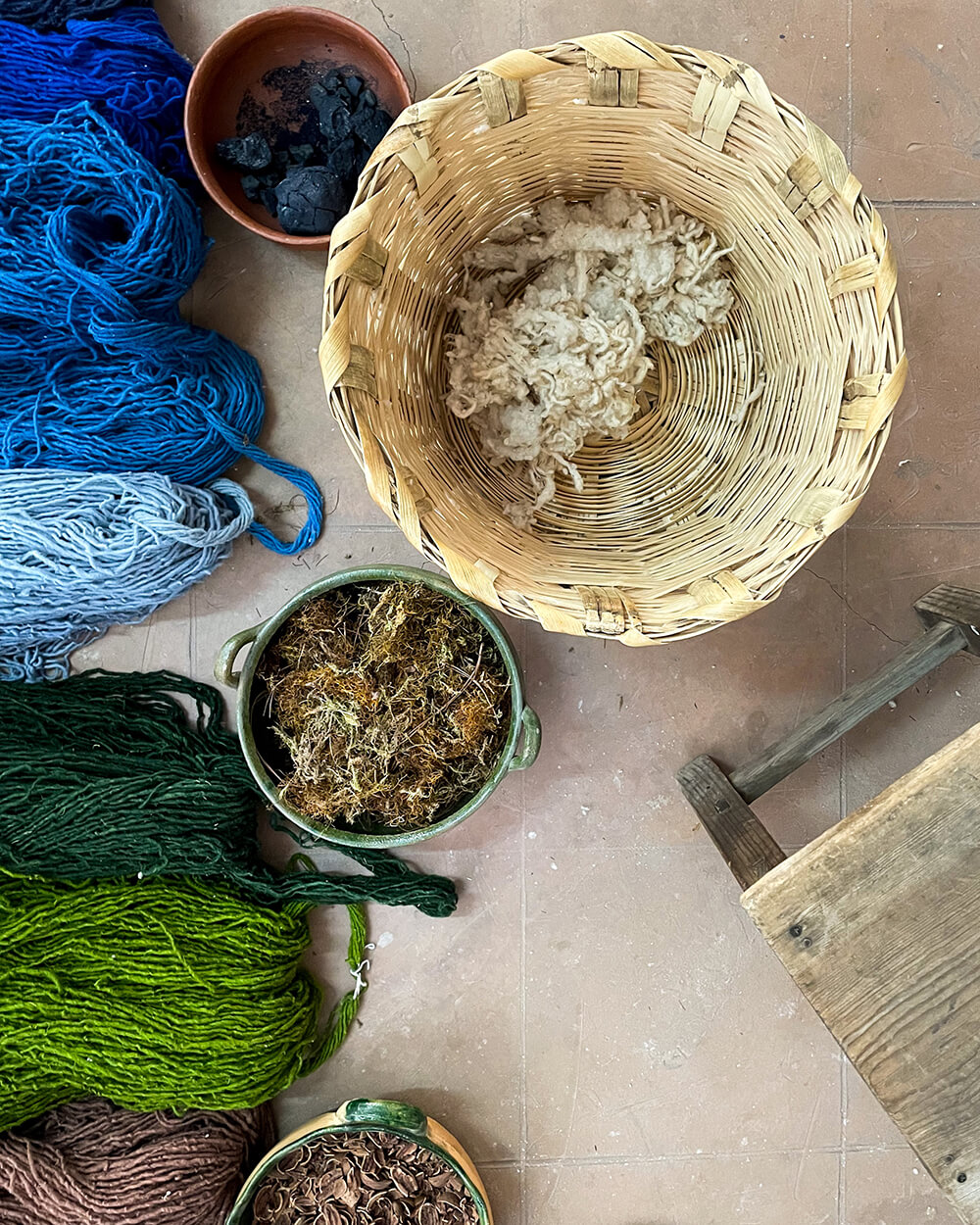
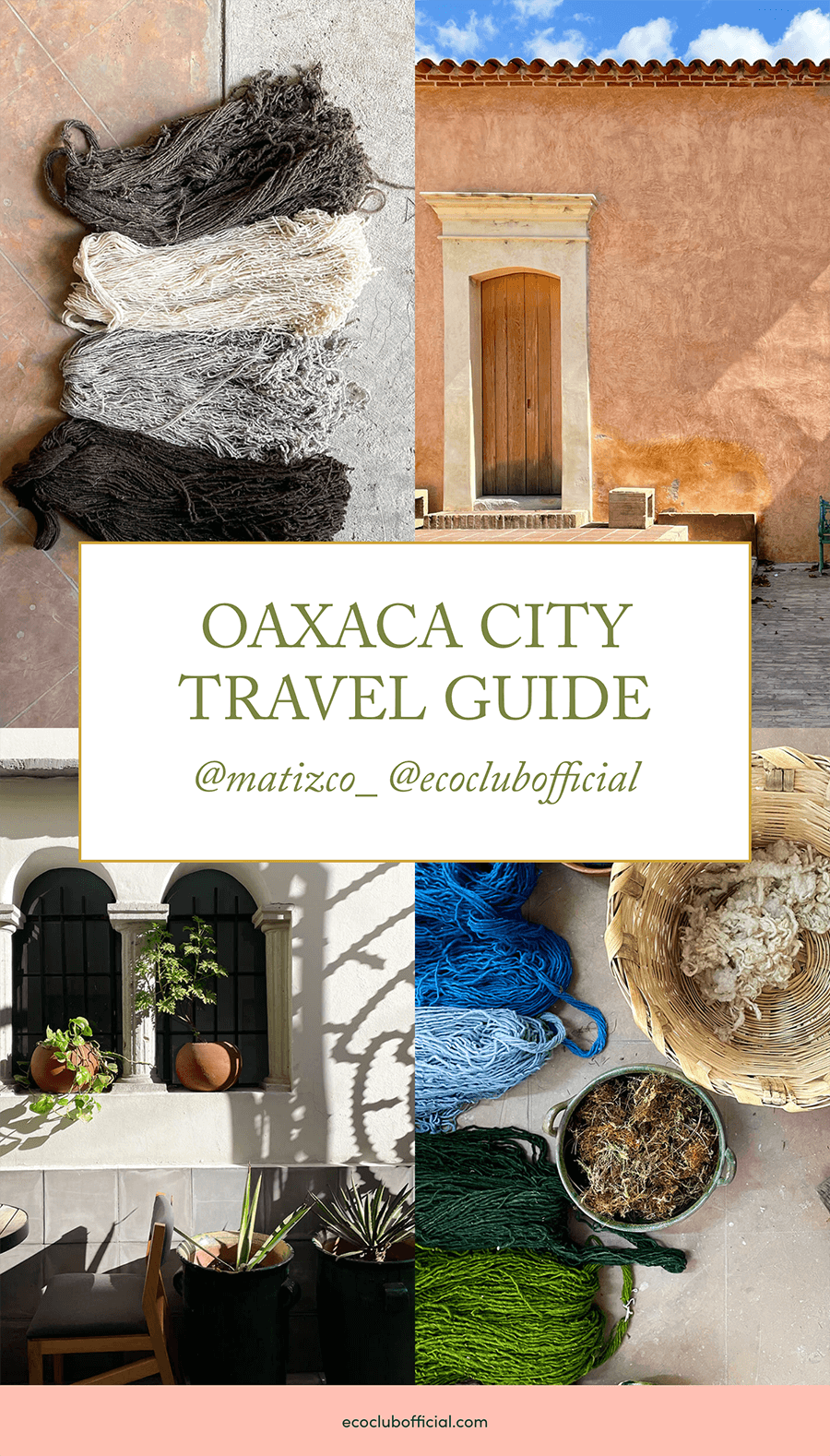
View this post on Instagram
View this post on Instagram
Thanks again to Jezarely and Matiz for sharing this Oaxaca travel guide and insight into their artisan process! Check them out, as well as other ethical home décor brands, in our sustainable directory, and follow them on Instagram @matizco_.
your two cents